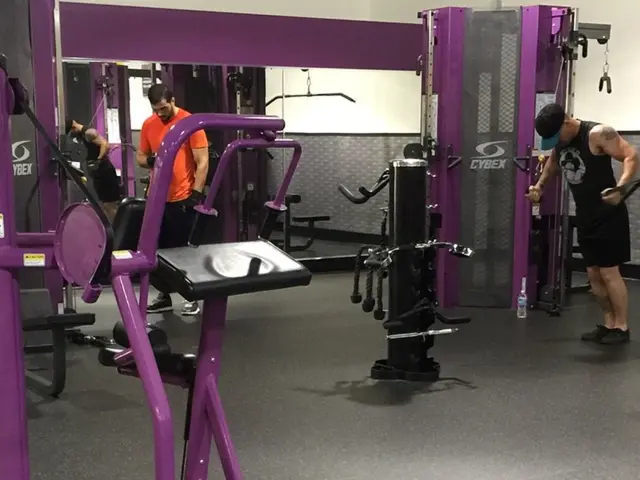Mental Health Benefits Comparison: Physical Activity in Track & Field vs. Yoga Practice
New Study Reveals Types of Exercise That Maximize Health Benefits
A comprehensive study from Lithuania has provided valuable insights into the impact of various physical activities on an individual's overall health. The research, which tracked over 5,800 adults, aimed to determine the connection between different types of exercise and 11 key health indicators, such as stress, depression, sleep quality, and body mass index (BMI).
In today's fast-paced world, understanding which exercises offer the greatest health advantages can provide much-needed motivation, especially when personal time seems scarce and fatigue looms. This study offers precisely that— an evidence-backed guide to exercise choices that yield substantial benefits in stress reduction, weight management, and improved sleep.
Recent Study Offers Guidance on Exercise Choices
We are all aware of the general advantages of regular exercise, but such vague guidance may not always inspire action, given the pressures of modern life. This research presents a report card of the 20 most popular forms of exercise—spanning activities like cycling, yoga, boxing, and triathlon—alongside professional sports and inactivity. In a world brimming with wearable trackers and wellness fads, it is heartening to see real-world data guiding us to effective workout options and their ideal demographics.
Unearthing the Surprising Impact of Exercise on Emotional Health
The study divided participants into three groups: professional athletes, regular exercisers, and those who did not exercise at all. The results were intriguing: while professional athletes boasted the best sleep quality and lowest BMI, they were not necessarily the happiest. Instead, individuals who regularly engaged in sports such as track-and-field, cycling, and boxing exhibited significantly lower rates of stress and depressive mood than the professionals.
Emotional health, it seems, may derive more benefits from recreational activities that are woven into one's leisure time. "People often think that professional athletes are the healthiest," said the researchers. "However, emotional health may benefit more from recreational activities performed outside of a competitive setting."
Optimizing Your Workout for Maximum Benefit
The study further compares various workouts based on their overall effectiveness, offering insightful findings for both men and women. For women, track-and-field and high-intensity training (HIT) emerged as the top choices for stress reduction, mood enhancement, and overall physical health. Dance and running were also outstanding performers. Yoga and volleyball, on the other hand, were not significantly associated with stress relief or improved mood.
Men, on the other hand, benefited most from triathlon and track-and-field. Boxing and bodybuilding followed closely, while yoga fared poorly in terms of both mood and energy levels. This surprising finding contradicts the popular image of yoga as a universal stress-buster, exemplifying how workout choices can vastly impact mental and physical well-being.
Regular Breakfast Consumption and Exercise
The study also delved into participants' eating habits, revealing that high-intensity training (HIT) women and track-and-field men were the most likely to eat breakfast regularly, highlighting a stable daily routine and healthier eating practices overall.
Interestingly, the biggest overeaters were women in cycling and aerobics, and men in wrestling and yoga. When it came to avoiding smoking and alcohol, track-and-field again topped the charts—particularly for women—while gym-goers smoked less, and powerlifters drank the least.
The Relationship Between Sleep, Movement, and Screen Time
Beyond workout habits, the study analyzed participants' full 24-hour energy use, including sleep duration, sitting time, light activity, and more. Track-and-field participants—both male and female—were found to sleep more, move more, and sit less compared to other group members. Martial artists and high-intensity training (HIT) enthusiasts, however, logged more sedentary time and shorter sleep durations. These findings suggest that consistency trumps intensity when it comes to maintaining long-term health benefits.
In conclusion, doing something—anything—is always better than nothing. Regular exercise—regardless of type or intensity—improves health indicators across the board for those who participate, compared to sedentary individuals. Furthermore, engaging in exercise during leisure time yields greater mental health benefits, and track-and-field-style workouts (such as sprinting, jumping, and interval training) offer the most significant total health advantages, especially for mood and BMI.
As always, it is essential to tailor our exercise choices according to individual needs and goals. The next phase of research will delve into age differences, long-term participation effects, and workout transferability for improved health outcomes. In the meantime, remember: your choice of movement can shape your mental and physical health in ways you may not have imagined.
Engaging in recreational activities during leisure time may have a more significant impact on mental health, as regular participants in sports such as track-and-field, cycling, and boxing showed lower rates of stress and depressive mood compared to professional athletes. (mental-health, health-and-wellness, fitness-and-exercise)
Track-and-field workouts emerged as a top choice for women, offering substantial benefits in stress reduction, mood enhancement, and overall physical health. This type of exercise, which includes activities like sprinting, jumping, and interval training, seems to offer the most significant total health advantages. (science, fitness-and-exercise, health-and-wellness)








